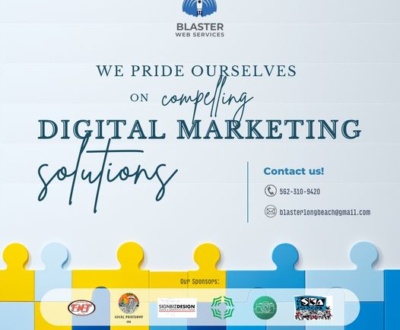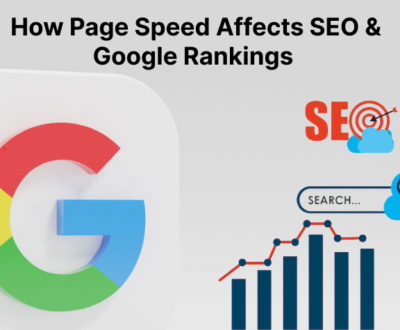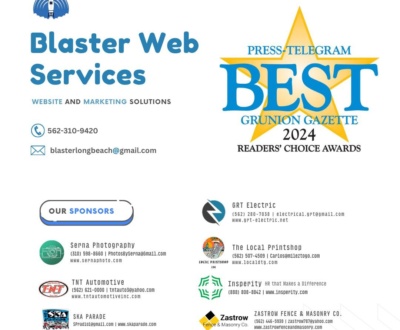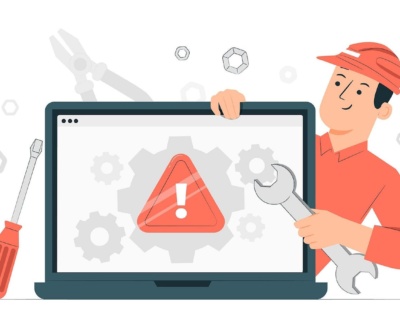PPC for Beginners: Basic Guide for Pay-Per-Click Advertising
- October 6, 2023
- Blaster Web Services Blog, Online Marketing, SEO
Pay-per-click (PPC) Advertising is an internet marketing strategy you simply can’t ignore in today’s competitive market. Ever notice those sponsored links that show up on Google or while you scroll through your social feeds? These are PPC ads and their goal is for advertisers to casually place their content in front of their target market online.
PPC ads are meant to be an unobtrusive advertising tactic where ads appear while a person goes about their regular internet browsing. So how can you create PPC ads for your website? There’s an underlying science to creating effective paid advertisements. It requires thorough keyword and demographic research, strategic bidding, and compelling ad copy to get someone to click.
We know diving into pay-per-click advertising can certainly be intimidating.
Planning your PPC campaign
Who: Who’s your target market for this ad ( who do you want to see it)? Sometimes it helps to personify your ‘who’ as if they were a made-up person! Think about how this person would talk, how they spend their free time, and even what you could see them wearing. As we mentioned above, planning a successful PPC campaign requires some rigorous research and smart thinking. We suggest the best way to start planning your PPC campaign and understanding your audience is by answering these crucial questions:
Our Tip: Creating a persona for your target market can help you define everything from the language you use in your content and the visuals that would appeal to them most. Once you define your desired market you can delve into their location, interests, and even past purchasing behavior. The more specific you are in defining your target audience, the more likely your ad will convert them. Facebook offers a great tool called Audience Insights that provides great insight into your potential audience and even suggests the best time to reach your audience.
: What kind of action do you want the people who see your PPC ad to take?
Our Tip: Each click you generate is a potential customer. If you have an online store make sure your users are able to purchase your product or service the moment they arrive on your website. They may be using a mobile device so optimize your PPC landing pages for smartphones and tablets.
When: At which point in the purchasing funnel do you meet your customers?
Our Tip: From initial awareness to evaluation and final purchase, every step of the purchasing funnel requires different messaging. Perhaps your customers are just finding out about your brand, or maybe they need further details about your product. Show how well you know them by making an ad in line with their current interests and watching the engagement grow.
Where: Where is your target market hanging out online? From remarketing to your current visitors, promoting posts on social media, or on-page ads on pretty much any search engine, there’s no shortage of places you can showcase your business. Start by asking yourself where your current and future customers are hanging out and investigate creating a PPC ad exactly where they already are.
Our Tip: Once you have a good grasp of the websites that you’d like to advertise on, research how much ads cost on that channel – not every ad space will come with the same price tag, so sometimes you may find it more feasible to go with your second or third choice to get more bang for your buck.
How: How do you plan to measure success and optimize future campaigns?
Our Tip: You probably have a few customers already, so start with an audience most familiar to you. When growing your audience on Facebook, try the Lookalike Audiences feature to reach new people who are most similar to your favorite current customers.
If you’re creating Search Engine Ads, start with researching your keywords using Google’s free keyword tool. Finding good keywords that aren’t as widely used may be cheaper and result in higher click-through rates (the ratio of users who click on a link to the number of total users who viewed it).
Creating a PPC campaign with purpose
Our Tip: One campaign, one goal. Whether you are trying to grow impressions to give your brand more exposure or obtain more leads to collect contact info, always focus on one specific KPI (Key Performance Indicator). Not only will this make your campaign easier to receive from your audience, but you will also have an easier time measuring its success. When you have several goals, simply plan additional campaigns for each one. Now that you know who you’re creating your PPC ad for and where you’re putting it, you’ve got to actually make the content. Odds are you can write a book about what your business can offer, but when it comes to your online advertising, less is more. When creating a PPC ad, pick one message to highlight. You don’t want to confuse your audience with too much information. Often times the one thing that you want to let your audience in on is a sale, a hot new product, or the most in-demand service that your business has to offer. By creating a specific promotion you’ll have an easier time choosing the targeting metrics and measuring success.
The purchasing funnel
Once you have set a campaign goal it is important to map out how a customer may interact with your purchasing funnel. The funnel starts when your customer first sets eyes on your ad – aka the 1st point of contact. Where they go from there will be determined by how effective your ad is at promoting your desired action.
Example of a purchasing funnel:
Measuring cost
For many people, the success of your PPC campaign is often determined by how many new clients you’ve garnered as a result of your promotion. Here’s an easy calculation:
Let’s say we have a campaign budget of $10 and you are estimated to make 1000 impressions in your targeted audience. Out of these 1000 impressions you received 50 clicks:
If out of those 50 clicks 2 converted:
![]()
Therefore, your initial $10 investment yielded 2 customers at $5 each.
Our Tip: Never skip the step of doing this math! You should always keep testing new audiences and content to get your conversion rate higher.
Start with a sample
Our Tip: Sample budgets are great to help you determine how much you will have to pay for specific keywords and ultimately how much are you willing to spend to convert a single customer. Start with a small budget and increase your spending and targeting based on how successful your advertising is proving to be. The cost and effectiveness of your pay-per-click ad can be a result of several factors including on-page appearance, targeting, timing, and much more. Whether it’s your content, creativity, or targeting, you may find that your objectives need some tweaking to make an impact. Don’t be scared to make those changes as you go. With a little patience, you will figure out the right balance.PPC advertising is not a go big or go home game. Especially if you’re in the beginning stages of experimenting with PPC or in the preliminary stages of a new campaign. Here at Wix we always start with a small sample budget to see how the audience reacts to the initial ad and adjust based on what we see.
Final thoughts
There’s no one way to create successful PPC ads. Once you have a good grasp of all the elements, there are countless experiments that you can test to maximize your reach and potential. Research your audience in depth so that you can present ads of the utmost relevance to the right people (after all, your click-through rate depends on it). Your assets should be easy to navigate and user experience simplified, and a well-thought-out call-to-action can be the deciding factor for what makes a customer move forward.
Contact Blaster Web Services for your Web Needs!
About us and this blog
We are a digital marketing company with a focus on helping our customers achieve great results across several key areas.
Request a free quote
We offer professional SEO services that help websites increase their organic search score drastically in order to compete for the highest rankings even when it comes to highly competitive keywords.
Subscribe to our newsletter!
More from our blog
See all postsRecent Posts
- Website As A Source Of Marketing April 22, 2024
- Ready to elevate your online presence? April 17, 2024
- How a Digital Marketing Agency Drives Business Growth? April 16, 2024










